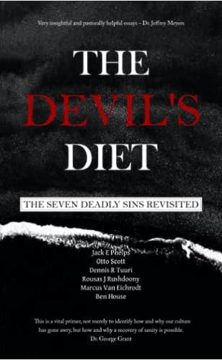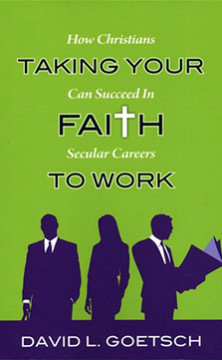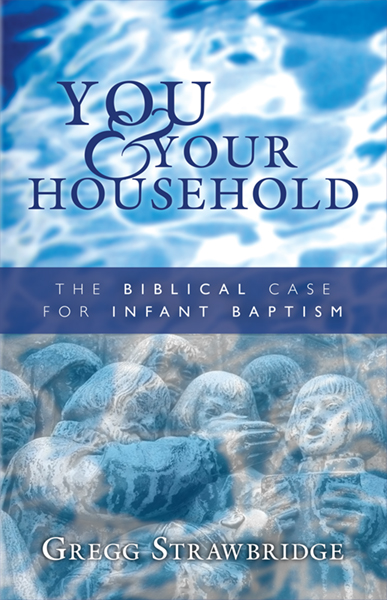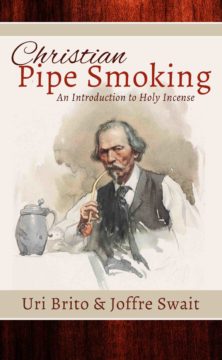
I was honored to be asked to speak at the annual Front Porch Republic conference alongside the Notre Dame political theorist and savant Patrick Deneen and the regionalist writer and wit Bill Kauffman, among others. The theme of the conference was, Localism and the Professions. They let me tag along I suppose because, like Mr. T., they “pity the fool!” Another reason may be that ministers were once considered professionals.
The conference this year took place at Hope College in beautiful Holland, Michigan. A portion of this talk was adapted from something I published at Front Porch Republic a few years back.
Here’s my talk:
Professionals profess things. That’s what professionals do. They have been entrusted with valuable information.
I’m a minister, I’m entrusted with professing the gospel.
Information should bring Aristotle to mind, the man who identified the causes that inform everything. While every community begins with material causes that make a community possible, there are three other causes that actually make a community out of the materials on hand.
It is worth noting that each of the traditional professions corresponds to one of these causes. I think it is fair to say that the medical profession attends to the efficient cause. Sick people can’t work. Then there is the legal profession. Lawyers are stewards the formal cause. Through the administration of the laws, people can serve the common good as they pursue private goods. But traditionally it was the clergy that helped a community see what it is all for. We were the stewards of the final cause.
Notice the use of the past tense? For reasons that have spawned a million books, I’m out of the traditional job. No one really wants to hear from me about what it’s all about.
This can be seen in urban planning. People don’t build churches in the center of things anymore.
I live in New England where every town green is graced by a while clapboard Congregational church. But the only question people ask of those old buildings is, “What time is it?” when they glance at the steeple clock.
When people do look to the clerisy for guidance it isn’t as a community, but as consumers. And generally these individuals are looking for what George Barna calls “life coaching” to help them reach their personal goals. I’m like the trainer down at the health center. I provide advice on a proper diet and workout regime for the spirit.
Some of my colleagues have taken this up with gusto. They help people develop a personal relationship with Jesus. And this relationship is inward, and very, very personal. I’m reminded of Harold Bloom’s take on the old hymn, “In the Garden”. People go to the garden alone to commune with Jesus. And Bloom asked, “Just where is this garden, anyway?” It’s a Gnostic garden, he surmised, I think correctly. It is a virtual place; it only exists inwardly.
But local communities are real places that can be found using a map.
The Blessing of Getting Stuck
Speaking of places, now that I’ve treated the professions, let’s look at the other operative word in title of this conference—localism.
I now grudgingly accept that you don’t choose the location; the location chooses you.
I’ve moved around a lot during my time on the planet, first as luggage, then as the guy with the luggage. But I’ve been sitting on the same spot for the last ten years or so. The spot is in the Connecticut River valley, the rusted heart of industrial New England. The mills are largely gone; the gun makers are leaving, and if we ever beat our spears into pruning hooks the folks who work for Electric Boat will be out of work. But I won’t be leaving any time soon. I’ve set down some roots.
It’s not because I’m from there. I’m from a different valley—the Ohio River valley, western Pennsylvania specifically. It’s a rusted belt too, but different enough that I don’t feel entirely at home in my new home. There’s no going back, though; I’m different enough now that western Pennsylvania isn’t home anymore. I’m a stranger wherever I go, I suppose.
Now, we all know what Wendell Berry thinks of ministers. We’re careerists, careening from church to church. We just don’t care enough about the places we’re called to. He’s right. But it begs a question. Yes, many of us blindly take our cues from mega-church pastors thousands of miles away, and we hanker after a “larger sphere of ministry”, but the ladies in our churches often take their cues from a pastor who’s been dead for thirty years. And when a congregation turns on you, your best hope is to get out of Dodge as fast as you can. This can discourage putting down roots.
 What does it mean to put down roots anyway? Does it mean buying a house? Shopping at farmers’ markets? Scolding yourself when you feel the urge to run?
What does it mean to put down roots anyway? Does it mean buying a house? Shopping at farmers’ markets? Scolding yourself when you feel the urge to run?
After thinking about it a while I’ve concluded it means what the metaphor implies: it means drawing nourishment from the place where you’re planted.
I’m not talking about drawing something from the atmosphere of a place. Local color is wonderful, but it won’t feed you (unless you can package it and sell it like they do on Cape Cod or in Vermont). What keeps you somewhere is productive property, the sort that can’t be moved. Wendell Berry has a farm. He cultivates it, and draws a living from it.
We can’t all get back to the farm, though–not soon, anyway. But there are other forms rooted property can take.
Small businesses usually work this way. Your reputation for minding the store takes years to build. And a pastor knows that a local businessman is worth three corporate executives. While the guy in the corner office may fill the offering plate with dough, his knowledge of a community is generally nil. And he could be transferred to Minneapolis in the blink of an eye. I’ve seen it: there he is; now he’s gone.
There is a risk to staying put. We should acknowledge it. That seems odd—what could be more conservative than putting down roots? But it is wildly speculative. The risk goes by the name: “opportunity cost.” By staying put you limit yourself to what this particular place can yield. And if you’ve made Detroit your home, well, too bad.
Local churches are somewhat like this. They’re not property—at least not a pastor’s property. But how my church fares will largely determine how I fare. While Connecticut isn’t Detroit, I do see young people leaving, and old folks too. It’s a hard place to start out, and a hard place to finish. It’s expensive to live there; it’s even more expensive to die here. Still, we’re holding our own, even growing some.
I wonder a bit about the future of my church, though. Someday she will be better served by a younger man. What then? Where will I go? I’ve seen old preachers kill their churches by using them as life support.
My church isn’t the only thing that keeps me here. There’s my wife’s family. We moved here between pastorates a decade ago in part because we wanted our kids to be around grandparents, aunts, uncles, and cousins. It was a good move.
But there was another reason we moved here: investment real estate. I had collected some properties in the area on the side over the years.
When I was just starting out my wife and I went to visit a saintly pastor and wife who were getting along in years. They lived in a trailer. Their good cheer and hospitality spoke to their royal status in heaven amid their humble surroundings. But I was ashamed of the church for forgetting them. I’ve known others like them, elderly ministers living in trailers.
Often they were the best men, not ladder-climbers, or namedroppers, just simple preachers who visited widows in their distress and went to fetch wayward children from the street. These were men I think even Wendell Berry would respect. But it was in the car during the ride home that I decided I would not become one of them. If possible, I would be both saintly and propertied. I don’t know if I’ve managed saintly—I’ve been told my faith is pretty earthy—but I’ve managed to become propertied. Maybe I’ve made some kind of trade. But I knew that day that, while I could trust the Lord to meet my needs, I could not trust the church.
That sounds terribly Protestant, I know. I suffer from the cautious love for the church that typifies the brand of Christianity I belong to.
I began investing in real estate in the early 1990s. I’ve done all right. Now I’m a freeholder. I even own enough to be considered a yeoman. I could have been a voter in colonial New England. It has afforded me a rare measure of independence for a preacher. But it has cost me something. I’m not free to get up and go. I’m rooted in the Connecticut River valley.
Commercial corporations have their own form of itinerancy. In the church the itinerancy was there from the start. The Son of Man had no place to lay his head, and Paul was a tentmaker—the perfect trade for a man on the road. Apostles didn’t set down roots. There was always another village on the other side of the hill that needed the gospel. But the apostles depended on the Lord. Their rootlessness distracts us from the roots that stuck straight up into the air. Corporation men are not rooted in the soil either. But their roots don’t reach up to heaven. They dig into corporations that float in the contested space between heaven and earth, where the Prince of the Power of the Air dwells.
Every formula for freedom I’ve come across contains some measure of dependency, usually hidden, like some secret ingredient. The Apostles were free because they depended on bread from heaven; corporation men are unencumbered by local loyalties because they live like tiny corpuscles in national and transnational bodies. But the yeomanry: family farmers, small business owners, and people like me, depend directly on a particular place for a living. As those places fare, so do we.
 But we enjoy another form of freedom. We’re more self-reliant because we depend on things close at hand, things that grant us more agency than the rootless are granted. Sure, our local communities can’t separate themselves from the world entirely, as Berry’s fiction beautifully laments, but I’ll take the risks that come with my place over the freedom of the corporation man. He’s tied to the earth too. The body he lives in is a giant Mickey Mouse in the Macy’s Thanksgiving Day Parade. It’s tethered to the ground with strings too thin to be seen on television. But eventually everything that begins on earth falls back to earth and dies. There is great freedom in accepting this. I suppose I will die where I am planted.
But we enjoy another form of freedom. We’re more self-reliant because we depend on things close at hand, things that grant us more agency than the rootless are granted. Sure, our local communities can’t separate themselves from the world entirely, as Berry’s fiction beautifully laments, but I’ll take the risks that come with my place over the freedom of the corporation man. He’s tied to the earth too. The body he lives in is a giant Mickey Mouse in the Macy’s Thanksgiving Day Parade. It’s tethered to the ground with strings too thin to be seen on television. But eventually everything that begins on earth falls back to earth and dies. There is great freedom in accepting this. I suppose I will die where I am planted.
—
If you’d like to know more about my latest book before shelling out your hard-earned money for it, Wipf and Stock, the publisher of my book, Man of the House, has given me permission to share a little sample of the book with you. The hope, of course, is you will like it enough to purchase a copy. Enjoy!.
Click here to download the book excerpt as a PDF: Man of the House_Excerpt



 In a recent
In a recent 







 Don’t get me wrong. I love onions. You can ask my wife. So when I suggest that the Benedict Option is really just an onion I am not saying that it was a terrible book. I am saying that I like it a lot. But I came away from the book wondering: where are the meat and potatoes?
Don’t get me wrong. I love onions. You can ask my wife. So when I suggest that the Benedict Option is really just an onion I am not saying that it was a terrible book. I am saying that I like it a lot. But I came away from the book wondering: where are the meat and potatoes?

 His father was a professor of French Literature and his mother a piano teacher and a poetess. Jordan graduated from the University of Georgia in 1971 with a degree in Comparative Literature and studies in music and political philosophy. He finished his master’s degree in systematic theology at Westminster Theological Seminary, Philadelphia and was awarded the D. Litt. degree from the Central School of Religion, England, in 1993.
His father was a professor of French Literature and his mother a piano teacher and a poetess. Jordan graduated from the University of Georgia in 1971 with a degree in Comparative Literature and studies in music and political philosophy. He finished his master’s degree in systematic theology at Westminster Theological Seminary, Philadelphia and was awarded the D. Litt. degree from the Central School of Religion, England, in 1993.













